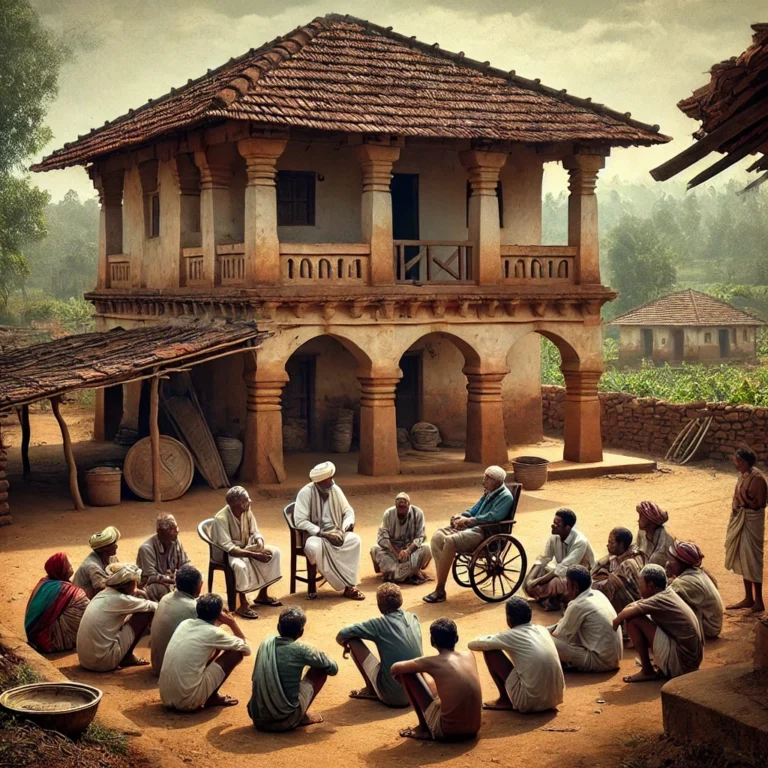
Uttar Pradesh: Introduction and Background
Uttar Pradesh (UP), India’s most populous state, remains the center of gravity in national politics. With 80 Lok Sabha seats, it decides the fate of most governments in Delhi.
Unlike South Indian states where linguistic or regional pride dominates, UP’s politics is shaped by caste, religion, and welfare identity. The fall of Congress in the late 1980s gave rise to Mandal (OBC-Dalit mobilization) and Kamandal (Hindu religious identity) forces, shaping the state’s political culture for three decades.
The political field has long been driven by four major players:
-
Bharatiya Janata Party (BJP)
-
Samajwadi Party (SP)
-
Bahujan Samaj Party (BSP)
-
Indian National Congress (INC)
However, after 2014, the BJP’s social engineering strategy and Mayawati’s decline have transformed the caste landscape. Once a strong Dalit-led party, the BSP has seen a steady erosion of its base — especially among non-Jatav Dalits, who have shifted to the BJP due to welfare benefits, Hindutva inclusion, and perceived accessibility.
Sociologist M. N. Srinivas’s ideas still help decode these transitions:
-
The dominant castes (Yadavs, Thakurs, Jats) continue to hold structural power.
-
Sanskritisation among backward and Dalit groups has blended with Hindutva identity politics, allowing the BJP to integrate formerly excluded groups.
In short, since 2014, UP’s politics has moved from identity assertion to welfare-based caste consolidation, with BJP as the anchor and BSP’s decline reshaping the Dalit question.
Hindu Castes and Their Political Patterns
1. Brahmins
-
Around 9–10% of the population.
-
Traditionally Congress supporters; since 1990s, they’ve backed BJP.
-
Influence remains high in Awadh and Purvanchal.
-
Post-2014, BJP’s symbolic outreach (temple visits, priestly honorifics, Ayodhya narrative) ensured Brahmins stayed loyal despite occasional local discontent.
2. Thakurs (Rajputs)
-
Around 7–8%; landowning elite in many regions.
-
After Yogi Adityanath became Chief Minister (2017), Thakurs gained unprecedented political visibility.
-
Their dominance, however, has created tension with OBCs and Dalits — a gap that previously benefited BSP but now often helps SP and smaller outfits.
3. Kayasthas
-
Small but influential urban caste, mainly in bureaucracy and academia.
-
Shifted from Congress to BJP, reflecting the educated middle-class trend post-2014.
OBC Communities (Other Backward Classes)
1. Yadavs
-
About 10–12%, concentrated in Etawah–Mainpuri–Azamgarh belt.
-
Core of Samajwadi Party (SP); retain loyalty due to social and symbolic leadership.
-
Post-2014, SP’s Yadav-centric image limited its appeal beyond this group.
-
SP’s challenge is to reach non-Yadav OBCs, who increasingly align with BJP.
2. Kurmis
-
Spread across Awadh and Eastern UP.
-
BJP gained this group after 2014 through Apna Dal alliance (Anupriya Patel).
-
Developmental politics and representation ensured loyalty shift from BSP/SP to BJP.
3. Lodhs
-
Strong presence in Bundelkhand and Awadh.
-
Kalyan Singh’s legacy (as OBC CM) tied them to BJP.
-
Continue to support the saffron party, symbolizing backward integration into Hindutva.
4. Nishads, Mallahs, Kewats
-
Marginalized OBC fishing communities along Ganga belts.
-
Once attracted by BSP’s inclusive rhetoric, they shifted to BJP due to Nishad Party alliance and recognition campaigns post-2014.
-
Reflect how BJP replaced BSP as aspirational vehicle for smaller OBCs.
5. Non-Yadav OBCs
-
Include Mauryas, Kushwahas, Rajbhars, Sainis.
-
Post-2014, BJP created ‘non-Yadav OBC bloc’ as counterweight to SP’s Yadavs.
-
BSP’s inability to retain these groups post-2014 further weakened its base.
Dalits (Scheduled Castes)
Dalits form ~21% of UP’s population — the largest in India.
Historically, BSP’s rise (1990s–2007) gave them voice and dignity. But since 2014, this narrative has fractured.
1. Jatavs (Chamars)
-
~55–60% of Dalits; BSP’s loyal base.
-
Continue to see Mayawati as symbol of Dalit pride, but organizational weakness and lack of local mobilization reduced BSP’s ability to convert sentiment into votes.
-
Younger Jatavs now show issue-based flexibility, occasionally supporting SP or even BJP candidates.
2. Non-Jatav Dalits (Pasi, Khatik, Valmiki, Dhobi, etc.)
-
Previously underrepresented in BSP leadership.
-
After 2014, BJP filled this vacuum through welfare delivery, symbolic recognition, and inclusion in party structures.
-
Schemes like PM Awas, toilets, ration cards, and Ayushman Bharat built a “beneficiary identity,” replacing traditional caste loyalty.
Impact of BSP’s Decline
-
BSP’s electoral slide post-2014 (from 19.6% in 2014 LS to 12.9% in 2022 assembly) fragmented Dalit unity.
-
Without BSP’s strong presence, Dalit votes are now multi-directional — Jatavs with BSP, non-Jatavs with BJP, and some tactical votes for SP in Muslim-heavy seats.
-
The absence of Mayawati’s active mobilization has allowed BJP to shape Dalit aspirations around inclusion, not confrontation.
Muslims in Uttar Pradesh
-
Around 19–20% of the population.
-
Remain the largest minority bloc, decisive in 100+ seats.
-
With BSP’s decline and Congress’s weakness, SP emerged as their primary vehicle.
-
Since 2014, Muslims have voted strategically to consolidate anti-BJP forces — mainly SP in 2022.
Without BSP’s earlier balancing role, Muslim representation is now more polarized, reinforcing SP’s minority image but limiting its broader caste expansion.
Christians and Sikhs
-
Christians are less than 1%, mostly in eastern UP. Minimal role.
-
Sikhs (~2–3%) in Terai belt (Pilibhit, Lakhimpur). Mostly middle-class agrarian, with mixed leanings, some with BJP.
Party-Wise Support Base (Post-2014)
BJP
-
Base: Upper Castes + Non-Yadav OBCs + Non-Jatav Dalits.
-
Post-2014 Shift: Absorbed BSP’s peripheral Dalit groups and SP’s marginal OBCs.
-
Strategy: Combine Hindutva with direct welfare outreach.
-
Outcome: BJP turned Mandal-Kamandal fusion into reality.
Samajwadi Party (SP)
-
Base: Yadavs + Muslims.
-
Post-2014 Challenge: Limited social base; BSP’s collapse gave short-term Muslim gain, but non-Yadav OBCs remain elusive.
-
Needs new Dalit and backward outreach.
Bahujan Samaj Party (BSP)
-
Base: Jatavs (core), some OBCs.
-
Post-2014 Decline:
-
Erosion of non-Jatav Dalits.
-
Weak grassroots organization.
-
No active street-level movement.
-
Mayawati’s silence and isolation alienated young voters.
-
-
Result: From a power broker to a vote divider, not a kingmaker.
Indian National Congress
-
Marginal in caste politics.
-
Gains only symbolic or legacy support in pockets (Rae Bareli, Amethi).
-
Muslims shifted to SP; Dalits to BJP/BSP.
Region-Wise Politics
Western UP
-
Jat–Muslim axis weakened after 2013 riots.
-
BJP retained upper castes and OBCs; RLD-SP trying revival.
-
BSP once had strong Dalit base here — now fragmented.
Central UP (Awadh)
-
Yadav belt and historical Congress region.
-
BSP’s earlier strongholds (Lucknow, Kanpur) weakened post-2014 as Dalits moved to BJP welfare camp.
Eastern UP (Purvanchal)
-
Extremely caste-fragmented.
-
BJP gained through micro-caste outreach.
-
BSP’s organizational absence hurt Jatav influence; SP dominates Yadav-Muslim zones.
Bundelkhand
-
Drought-prone; earlier BSP bastion under Dalit CM (2007).
-
Now BJP stronghold, thanks to direct benefits and symbolism of “law and order”.
Symbolism, Religion, and Identity After 2014
-
Ayodhya Temple Politics has recentered UP under Hindutva identity.
-
BJP replaced BSP’s pride narrative (Bahujan) with inclusion narrative (Sabka Saath).
-
Mayawati’s retreat from mass mobilization allowed BJP to occupy moral, cultural, and welfare space among marginalized castes.
Leadership & Personality Politics
| Leader | Symbolism | Current Status |
|---|---|---|
| Yogi Adityanath | Hindu pride + Thakur assertion | Dominant face of BJP |
| Akhilesh Yadav | Modern SP, Yadav-Muslim leadership | Rising but limited reach |
| Mayawati | Dalit icon, BSP founder | Symbolic leader, declining influence |
| Priyanka Gandhi | Revival attempts | Symbolic presence only |
25 Key Trivia on Post-2014 Caste & Religion Politics in UP
-
BSP’s decline fragmented Dalit politics after 2014.
-
Jatavs remain loyal to BSP but shrinking in turnout.
-
Non-Jatav Dalits shifted massively to BJP.
-
BJP’s welfare outreach substituted BSP’s old empowerment rhetoric.
-
SP gained Muslim votes displaced from BSP.
-
BSP’s silence created vacuum in Dalit assertion space.
-
BJP successfully turned identity politics into welfare nationalism.
-
Mayawati’s absence on the ground demoralized cadres.
-
SP remains caste-locked in Yadav–Muslim belt.
-
BSP’s “social engineering” era (2007) is now history.
-
BJP absorbed BSP’s grassroots workers through welfare intermediaries.
-
Dalit youth seek employment and dignity over caste symbolism.
-
BSP’s vote share halved between 2014 and 2022.
-
SP’s rise is conditional on anti-BJP consolidation, not organic growth.
-
Muslim consolidation favors SP but limits outreach.
-
BJP’s OBC expansion filled BSP’s organizational void.
-
Thakur dominance under Yogi causes silent OBC unease.
-
Brahmin appeasement remains a BJP balancing act.
-
Bundelkhand’s Dalit voters shifted entirely to BJP.
-
Ayodhya’s temple transformed Hindu consolidation.
-
Mayawati’s tactical silence helped BJP avoid Dalit anger.
-
Congress remains non-factor in caste alignments.
-
BSP’s “Sarvajan” phase backfired by diluting Bahujan core.
-
BJP’s social welfare model neutralized anti-caste narratives.
-
Post-2014 UP: BJP = synthesis of Mandal + Kamandal; BSP = memory of Bahujan past.

Kalyan Chandra
Kalyan chandra is a political strategist, media and communication consultant with the expertise in public relations, marketing, political research, election campaign management, psephology and digital analytics. He focuses on strategic political consulting, offering services that include competitive research, public opinion collection, and digital media management. Kalyan has significantly contributed to successful campaigns across India with his meticulous approach and deep understanding of the political landscape.
